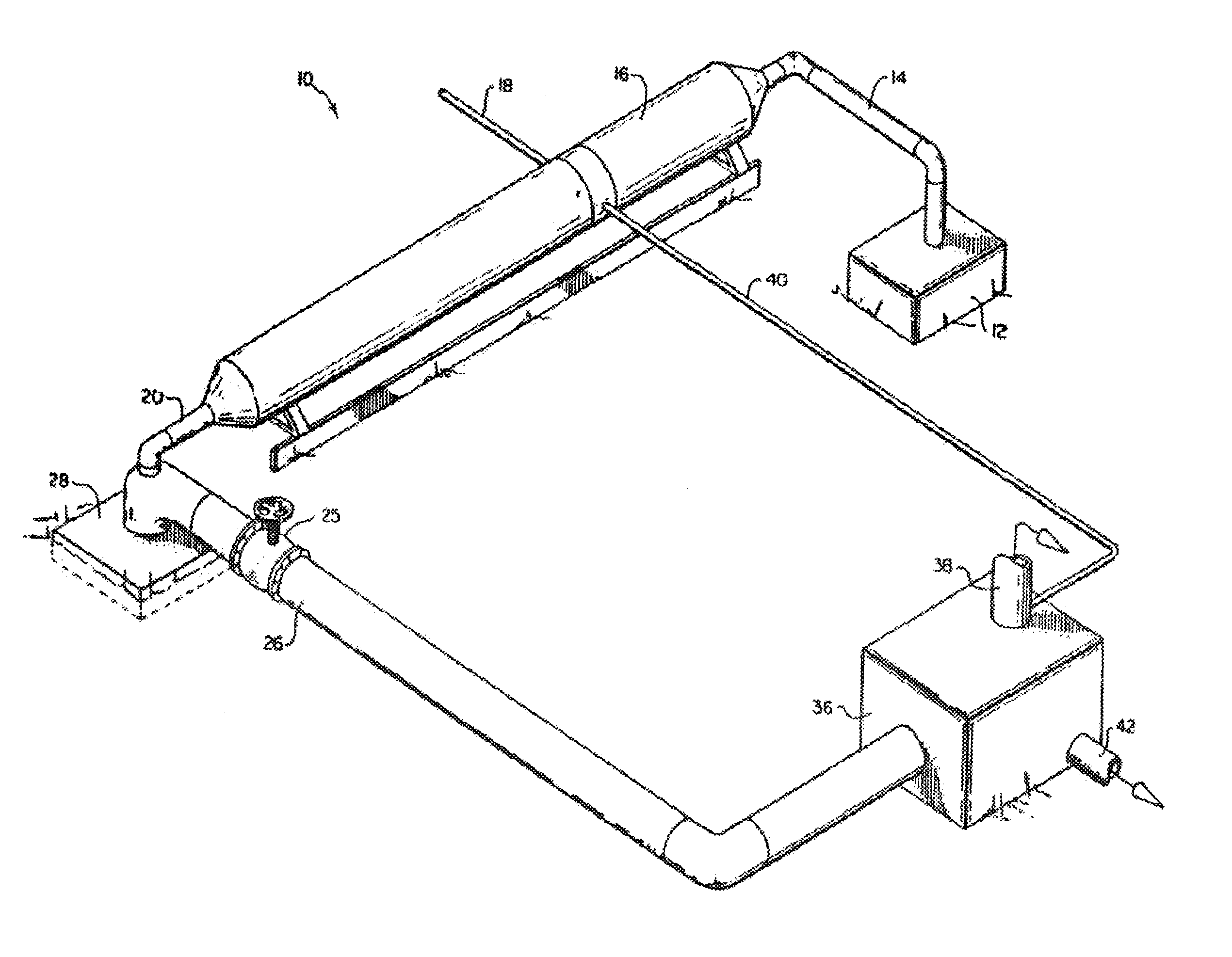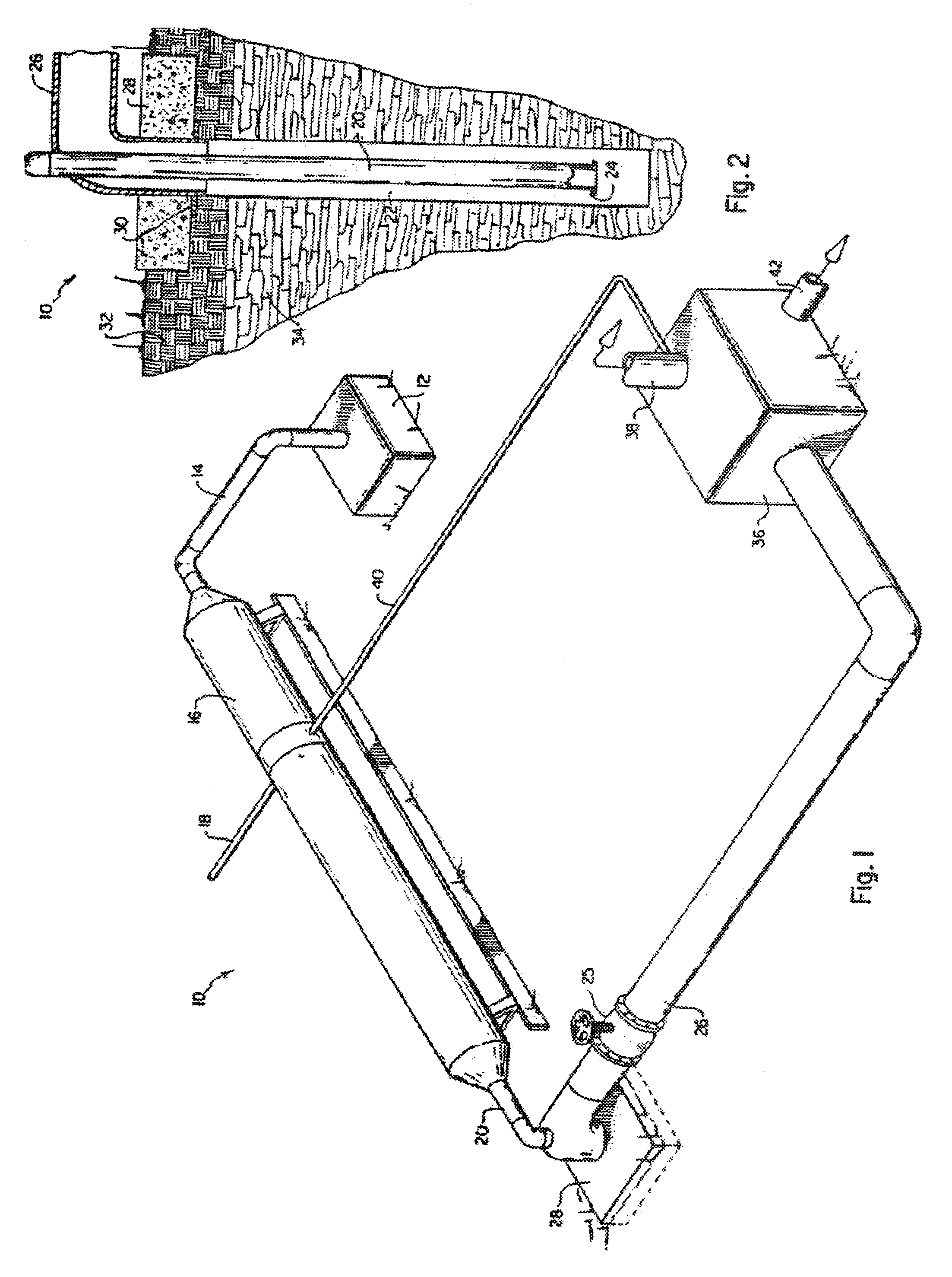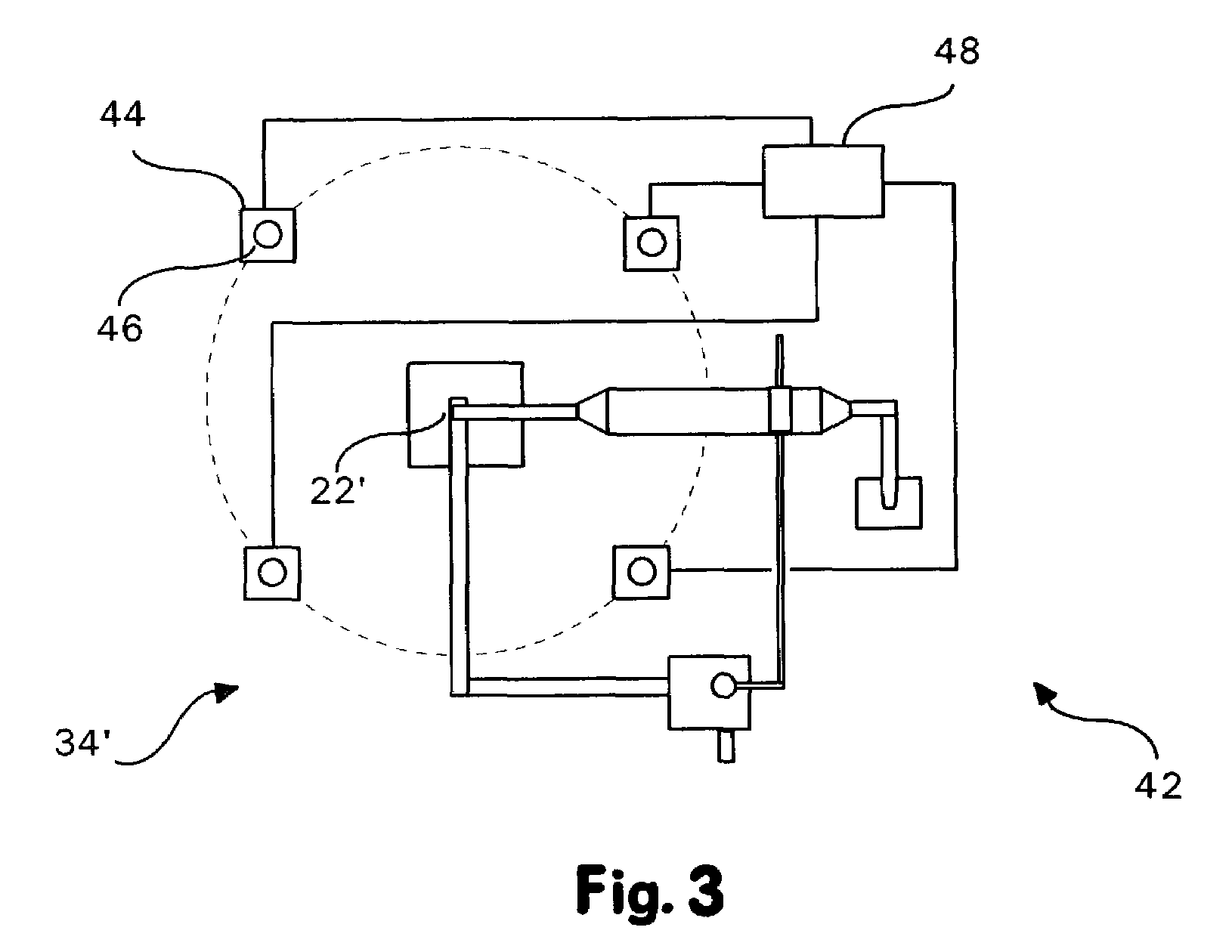Recovery of products from oil shale
a technology of oil shale and products, applied in the direction of fluid removal, borehole/well accessories, insulation, etc., can solve the problems of inability to recover inability to achieve total product recovery in situ, and high cost of oil shale removal from the ground, so as to achieve predictable and constant hydrocarbonaceous product recovery path, avoid expensive and time-consuming rubilization procedures, and preserve ground and surrounding terrain structural integrity
- Summary
- Abstract
- Description
- Claims
- Application Information
AI Technical Summary
Benefits of technology
Problems solved by technology
Method used
Image
Examples
Embodiment Construction
[0031]While this invention is susceptible of embodiment in many different forms, there is shown in the drawings, and will herein be described in detail, exemplary embodiments, with the understanding that the present disclosure is to be considered as illustrative of the principles of the invention and not intended to limit the invention to the exemplary embodiments shown and described.
[0032]An embodiment of the process and system of the present invention, generally designated 10, is illustrated in FIG. 1. The system 10 includes a compressor 12 located above-ground, outside of the oil shale formation. The compressor 12 serves to pressurize a processing gas such that the processing gas within system 10 is maintained at a pressure in the range of about 5 psi to about 250 psi. It is contemplated that pressurizing the processing gas in a range of about 60 psi to about 110 psi, particularly at around 80 psi to 90 psi, will produce favorable results.
[0033]The system 10 further includes an a...
PUM
 Login to View More
Login to View More Abstract
Description
Claims
Application Information
 Login to View More
Login to View More - R&D
- Intellectual Property
- Life Sciences
- Materials
- Tech Scout
- Unparalleled Data Quality
- Higher Quality Content
- 60% Fewer Hallucinations
Browse by: Latest US Patents, China's latest patents, Technical Efficacy Thesaurus, Application Domain, Technology Topic, Popular Technical Reports.
© 2025 PatSnap. All rights reserved.Legal|Privacy policy|Modern Slavery Act Transparency Statement|Sitemap|About US| Contact US: help@patsnap.com



